
What's on this page
Hyundai i30 2020
Carsguide Contributing journalist Peter Anderson had this to say at the time: As i30s go, this one is an oddball. It doesn't really belong anywhere and it's not even posh enough to whack the Golf in the nose. The N-Line models do that and they do it cheaper, too. It's a bit of a head-scratcher but I guess if you want a diesel i30 with lots of stuff, this is the car for you.
You can read the full review here.This is what Peter Anderson liked most about this particular version of the Hyundai i30: Lots of gear, Good safety package, Nice ride and handling compromise
The 2020 Hyundai i30 carries a braked towing capacity of up to 1600 Kg, but check to ensure this applies to the configuration you're considering.
The Hyundai i30 is also known as the Hyundai Elantra GT in markets outside Australia.
Hyundai i30 2020 News

Top 100 new cars sold in Australia in 2020
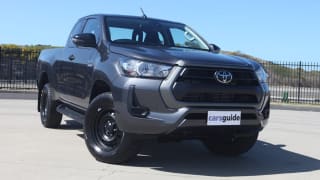
Toyota HiLux dominates Ford Ranger rival and all comers in drought-breaking November 2020 new-car sales
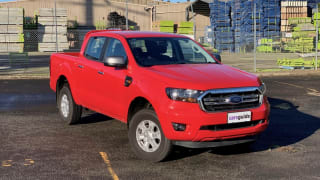
Ford Ranger back on top as Toyota's HiLux rebounds and RAV4 'cools off' in September 2020 new-car sales

New Hyundai i30 sedan 2021 N Line detailed: Kia Cerato GT rival uncovered!
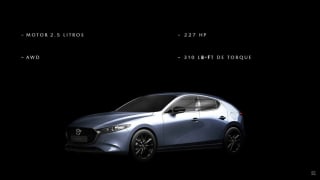
New Mazda 3 Turbo 2021 vs VW Golf R, Hyundai i30 N, Honda Civic Type R, Subaru WRX: How does it stack up against the performance kings?
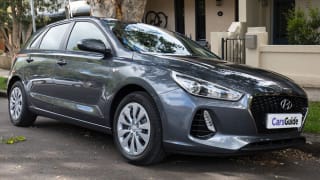
Best EOFY 2020 deals: Hatchbacks
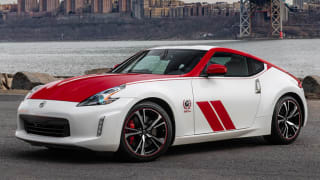
Top 10 EOFY new car deals
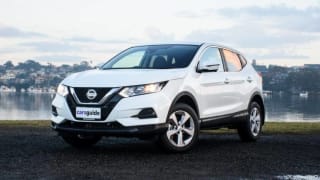
There has never been a better time to buy a new car

New Hyundai i30 N 2021 dual-clutch automatic detailed: VW Golf GTI-fighting hot hatch to score two-pedal option next year
Hyundai i30 2020 Price and Specs
Pricing guides

| Hyundai I30 Model | Body Type | Specs | Price from | Price to | |
|---|---|---|---|---|---|
| Active | Hatchback | 2.0L ULP 6 SP AUTO | $19,580 | $24,750 | |
| Active | Hatchback | 2.0L ULP 6 SP MAN | $17,600 | $22,330 | |
| Active 1.6 Crdi | Hatchback | 1.6L Diesel 7 SP AUTO | $19,690 | $24,970 | |
| Active 1.6 Crdi Smartsense | Hatchback | 1.6L Diesel 7 SP AUTO | $23,100 | $28,490 | |
| Active | Sedan | 2.0L ULP 6 SP SEQ AUTO | $23,210 | $28,710 | |
| Active | Sedan | 2.0L ULP 6 SP MAN | $21,010 | $26,620 | |
| Elite | Sedan | 2.0L ULP 6 SP SEQ AUTO | $26,620 | $32,890 | |
| N Line | Sedan | 1.6L ULP 7 SP AUTO | $29,040 | $34,980 | |
Hyundai i30 2020 Q&As
Check out real-world situations relating to the Hyundai i30 2020 here, particularly what our experts have to say about them.
-
Can I tow a small camper-trailer with my Hyundai i30?
Your numbers are correct, including the maximum tow-ball weight of 75kg. With that in mind, provided you don’t load the camper-trailer beyond the 1300kg mark, and you distribute that load properly to keep the two-ball weight under 75kg, you should be safe and legal to proceed.
Beyond keeping the mass within legal limits, the other hurdle you might face is the way the i30’s two-litre petrol engine produces its performance. There’s nothing wrong with the 120kW of peak power, but the engine’s peak torque is an unexceptional 203Nm and is produced at a high 4700rpm. That means you might find yourself working the engine pretty hard to maintain highway speeds.
The sister car to yours, the i30 with the 1.6-litre turbo-diesel might be a better choice for towing with less peak power but much more torque (300Nm, from as low as 1750rpm) making it a more relaxed performer and tower.
Show more -
Why is my 2020 Hyundai i30 misfiring?
This sounds like a problem that should be easily solvable by having your Hyundai dealership electronically scan the car and interpreting the fault codes that result. This can’t be done by the side of the road or in your driveway, so I doesn’t surprise me that your road-service provider hasn’t had much success.
Fundamentally, though, it’s simply not good enough for the dealership to continue to tell you it can’t find a problem. This is a brand-new car and it’s expected to perform faultlessly or, at the very least, to a standard that does not give your partner cause to refuse to drive it. The car is under warranty, so Hyundai is obliged to fix it. If you’re not happy with your dealership’s approach, I’d suggest calling Hyundai’s customer service department. Hyundai guards its reputation very closely in Australia, and isn’t likely to let a case like yours damage that.
Show more -
What new cars do you recommend?
If she’s been happy with her Accent, then perhaps a Hyundai i30 Active would be a good bet. It has Bluetooth, a rear view camera and GPS standard, so ticks all the boxes.
Show more
Hyundai i30 2020 Dimensions
Dimensions for the 2020 Hyundai i30 are dependent on which body type is chosen. The maximum width and height is 1825mm x 1455mm and can vary on the basis of model.

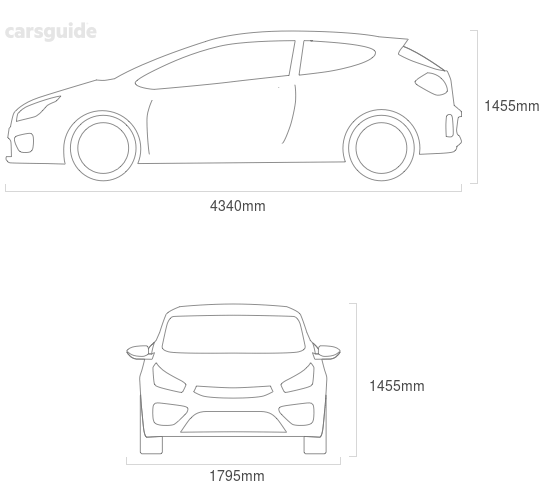
| Hyundai i30 Model | Body Type | Height x Width x Length | Ground Clearance | |
|---|---|---|---|---|
| GO | Hatchback | 1455x1795x4340 mm | 140 mm | |
| Active | Hatchback | 1455x1795x4340 mm | 140 mm | |
| base | Hatchback | 1455x1795x4340 mm | 140 mm | |
| Active 1.6 Crdi | Hatchback | 1455x1795x4340 mm | 140 mm | |
| Active | Sedan | 1430x1825x4650 mm | 140 mm | |
| N Line | Sedan | 1430x1825x4675 mm | 140 mm | |
| Elite | Sedan | 1430x1825x4650 mm | 140 mm | |
| N Line Premium | Sedan | 1430x1825x4675 mm | 140 mm | |
Hyundai i30 2020 Fuel consumption
Fuel consumption for the 2020 Hyundai i30 is dependent on the type of engine, transmission, or model chosen. The Hyundai i30 currently offers fuel consumption from 4.7 to 8.8L/100km. The Hyundai i30 is available with the following fuel types: Diesel, PULP and ULP.
| Hyundai i30 Model | Body Type | Specs | Fuel Consumption | |
|---|---|---|---|---|
| Active 1.6 Crdi | Hatchback | 1.6L,Diesel,7 SP AUTO | 4.7L/100km | |
| N Performance | Hatchback | 2.0L,PULP,6 SP MAN | 8.8L/100km | |
| Active | Hatchback | 2.0L,ULP,6 SP MAN | 7.3L/100km | |
| Active | Sedan | 2.0L,ULP,6 SP MAN | 7L/100km | |
Hyundai i30 2020 Wheel size
Wheel size for the 2020 Hyundai i30 will vary depending on model chosen, although keep in mind that many manufacturers offer alternate wheel sizes as options on many models.The wheel size available will alter the range of tyres available to be fitted.
| Hyundai i30 Model | Body Type | Front Tyre Size | Front Rim | Rear Tyre Size | Rear Rim | |
|---|---|---|---|---|---|---|
| GO | Hatchback | 205x55 R16 | 16x6.5 inches | 205x55 R16 | 16x6.5 inches | |
| Active | Hatchback | 205x55 R16 | 16x6.5 inches | 205x55 R16 | 16x6.5 inches | |
| base | Hatchback | 205x55 R16 9 | — | 205x55 R16 9 | — | |
| Active 1.6 Crdi | Hatchback | 205x55 R16 | 16x6.5 inches | 205x55 R16 | 16x6.5 inches | |
| Active | Sedan | 225x45 R17 9 | — | 225x45 R17 9 | — | |
| N Line | Sedan | 235x40 R18 9 | — | 235x40 R18 9 | — | |
| Elite | Sedan | 225x45 R17 9 | — | 225x45 R17 9 | — | |
| N Line Premium | Sedan | 235x40 R18 9 | — | 235x40 R18 9 | — | |
Hyundai i30 2020 Towing capacity
The Hyundai i30’s towing capacity ranges from 1100kg to 1600kg. Some models also offer heavy-duty or towing option packs which can increase towing capacity, as well as options which can hamper towing capacity. Towing capacities can vary wildly on a large number of factors. These include engine, transmission, model, and options chosen. Always check with the manufacturer or in your vehicles handbook before attempting to tow anything.
| Hyundai i30 Model | Body Type | Specs | Braked Capacity | |
|---|---|---|---|---|
| GO | Hatchback | 2.0L,ULP,6 SP MAN | 1300kg | |
| Active | Hatchback | 2.0L,ULP,6 SP MAN | 1300kg | |
| GO | Hatchback | 2.0L,ULP,6 SP AUTO | 1300kg | |
| base | Hatchback | 2.0L,ULP,6 SP MAN | 1300kg | |
| Active | Sedan | 2.0L,ULP,6 SP MAN | 1200kg | |
| Active | Sedan | 2.0L,ULP,6 SP SEQ AUTO | 1200kg | |
| N Line | Sedan | 1.6L,ULP,6 SP MAN | 1200kg | |
| Elite | Sedan | 2.0L,ULP,6 SP SEQ AUTO | 1200kg | |


